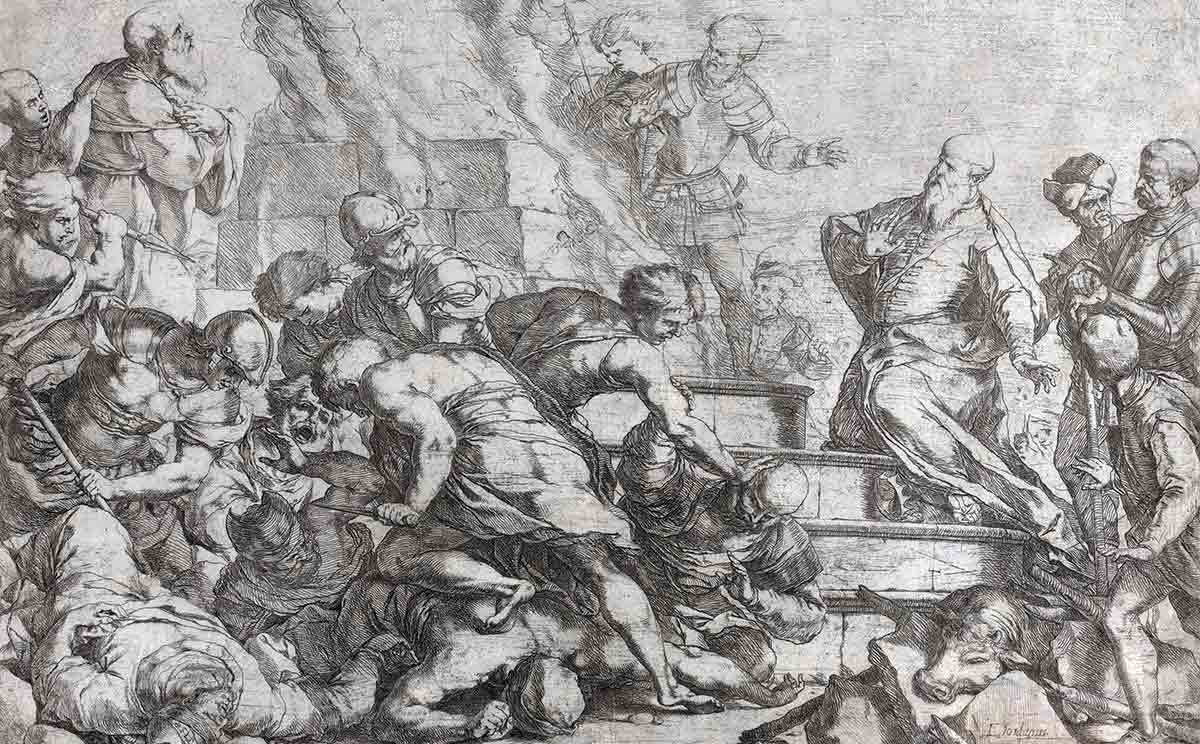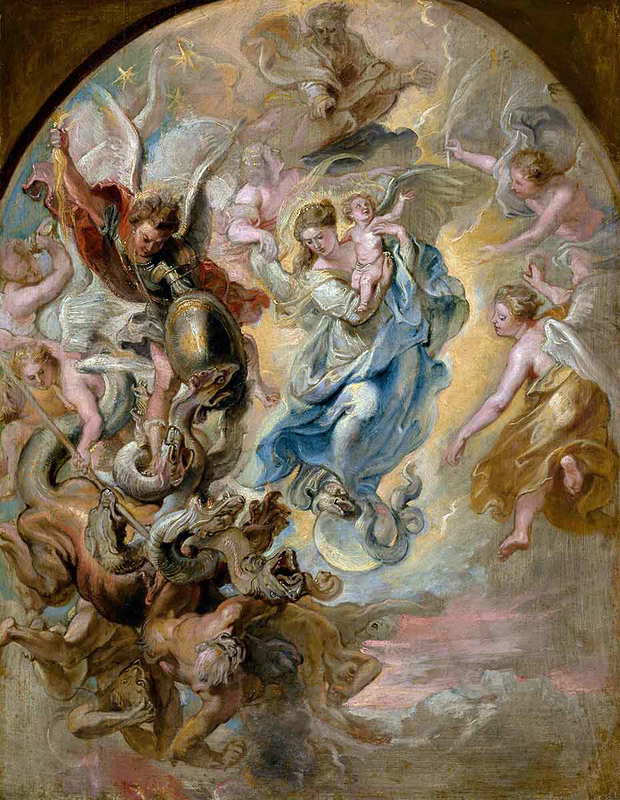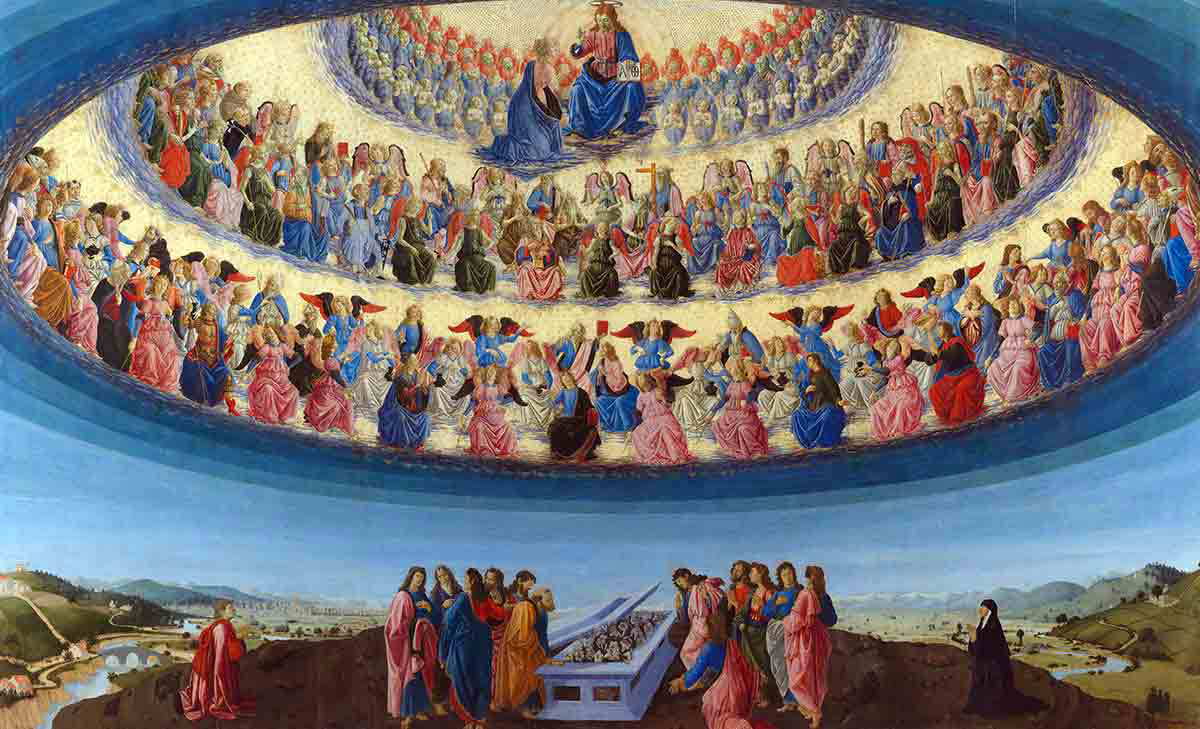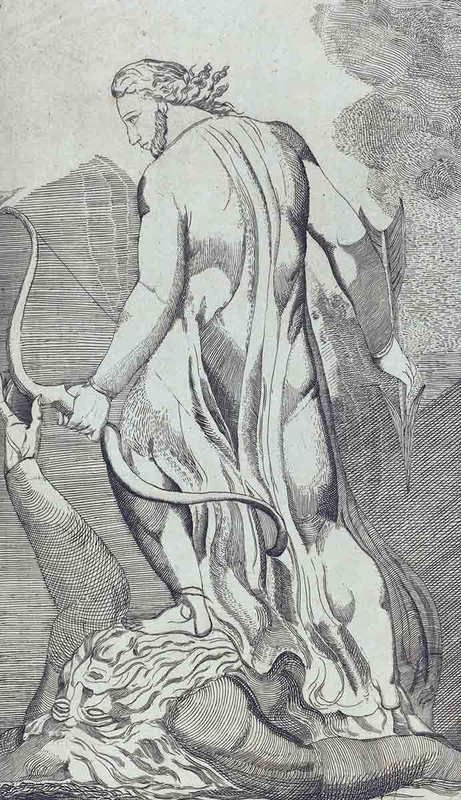
Despite their tantalizing presence all over the Bible, readers are left with a lot of questions not only about where angels and demons came from but also about where they might be going. While some passages allude to the final annihilation of demons, these references use symbolic, otherworldly, often ambiguous language to describe it. Angels, meanwhile, seem untouchable; there is no suggestion that they will die or cease to exist.
The Hebrew Bible Does Not Give Demons a Prominent Role

Angels are featured frequently in the Hebrew Bible (called the Old Testament by Christians). But the Hebrew Bible does not name the creatures that correspond to what most think of when they picture demons today. The closest it comes to mentioning demonic beings is its many references to deities worshipped by other nations. These deities are probably not best described as demons, however, for two reasons.
First, the biblical authors are ambivalent about the existence of spiritual forces behind these deities. On the one hand, some passages taunt and mock deities apart from YHWH, Israel’s god, in the second person. This may be an indication of belief that their taunts are being heard. But these jeering discourses could also be taken as sarcasm, since other passages relegate these “empty idols” to fiction.
Second, the Hebrew Bible does not present a spiritual realm in which certain creatures intractably or inevitably oppose God. Instead, all heavenly beings are under God’s control.
Demonic Destiny is Ambiguous in the Hebrew Bible

Although the Hebrew Bible repeatedly predicts the victory of Israel’s deity over the gods of their neighbors, God is often seen as sending heavenly agents to destroy or afflict human beings both from within the Israelite nation and from outside it. From the perspective of their victims, these heavenly agents would seem demon-like. The prophets, meanwhile, predict a future age in which war, pestilence, and other suffering will come to an end. This implies an end to the destructive activities of spiritual beings, but it is not clear whether or not a certain class or group of spiritual beings will themselves be destroyed to bring about this universal peace and bliss.
Demons Are Repeatedly Obliged to Surrender in the New Testament

Unlike the Hebrew Bible, the New Testament presents a spiritual realm in which good and evil forces are fundamentally opposed. There is little to no hope presented for the reformation or conversion of demons in the New Testament. Angels, meanwhile, appear to be so fixed in their commitment to God that many theologians believe they have no free will of their own.
In the Gospel of Matthew, Jesus makes a reference to an “eternal fire” as a place that was prepared for the Devil and “his angels.” This reference suggests an ultimate destruction of demons. Likewise, in the book of Revelation the narrator John sees the Devil thrown into a “lake of fire” where, the text says, he will be tormented forever and ever. This biblical book is written in a highly imaginary, symbol-filled genre called apocalyptic (the word apocalypse means “revelation”). Thus, many interpreters hesitate to claim that this passage foretells the fate of demons in a literal sense.
Angels and Other Heavenly Creatures Worship God Forever

Angels and the other creatures that are often categorized as such are depicted throughout the Bible’s apocalyptic texts as worshipping God continually. No other possible future is presented for them in the New Testament.
This raises the question, however, of where demons came from. If angels are incapable of doing anything other than worship God, what went wrong with some spiritual beings—namely, the ones we call “demons”?
The Bible simply does not answer this question. This gap in the story of the Bible has proven fertile ground for stories about Satan’s fall from heaven, his former role as an angel, a heavenly rebellion of fallen angels against God, and so on. While various such rebellions are alluded to in the New Testament, no clear timeline of events is presented, and interpreters are not in agreement about what parts of those allusions were meant to be taken literally by the original authors.
Religious People View the End of Demons in Various Ways

For some Bible interpreters, demons and angels are highly similar to human beings. They were created before humanity and, while spiritual in nature, they cannot be in more than one place at a time. They target individual human beings, tempting them toward evil and tormenting them as well. Angels are at work trying to thwart their activities and likewise are only located in one place at a time.
For others, demons are symbols of those aspects of evil’s character that are otherwise unexplainable. Picturing a cosmic conflict between angels and demons allows people to think about evil in a way that abstracts it from the mere choices of individual human beings while also highlighting evil’s devastatingly personal effects.
While these disagreements affect how religious Bible readers view the fate of demons and angels, all agree that the Bible predicts the end of evil and the triumph of good. Angels, associated with goodness, will endure; demons, associated with evil, will perish.


















